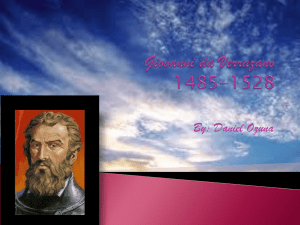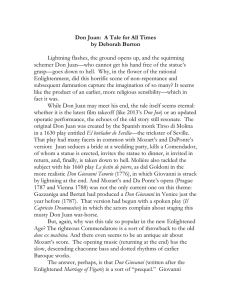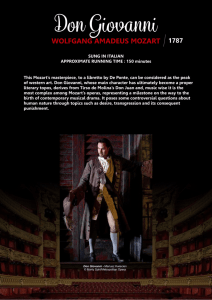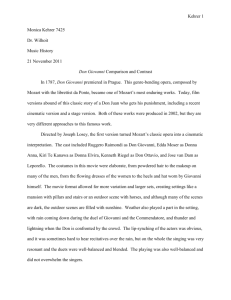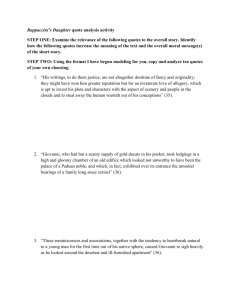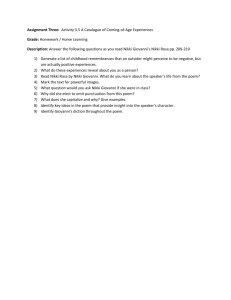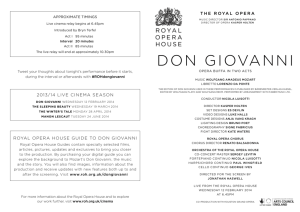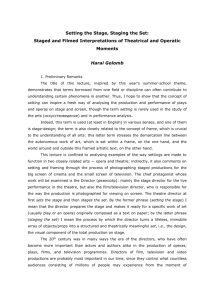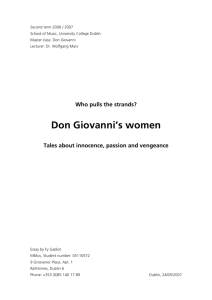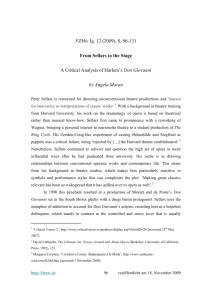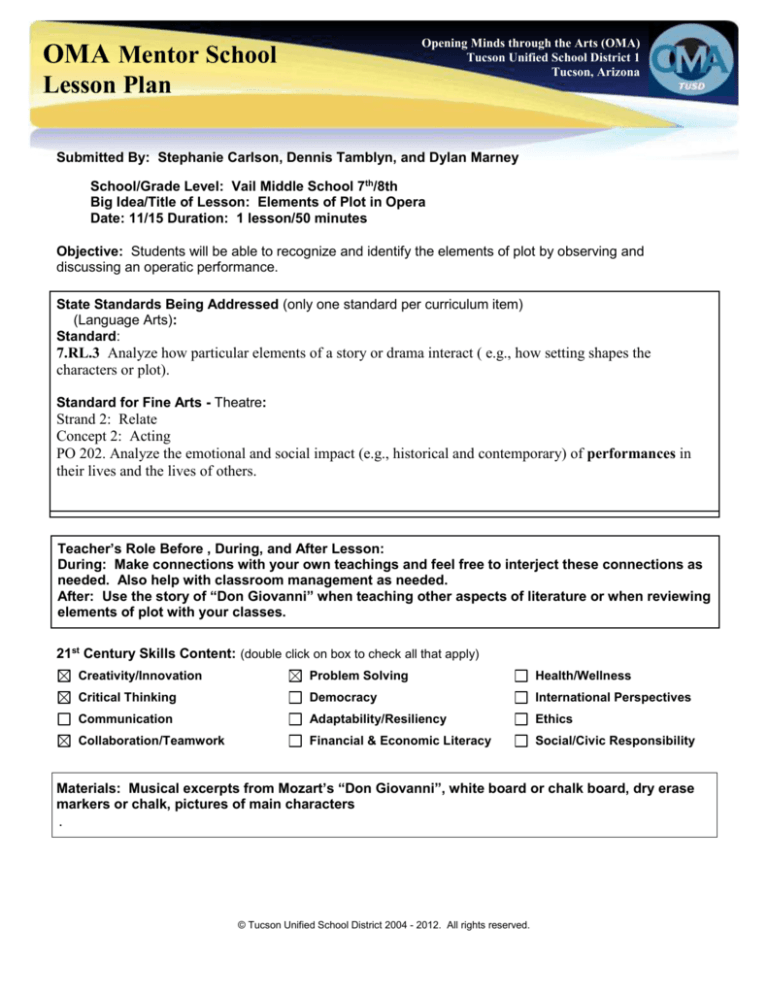
Opening Minds through the Arts (OMA)
Tucson Unified School District 1
Tucson, Arizona
OMA Mentor School
Lesson Plan
Submitted By: Stephanie Carlson, Dennis Tamblyn, and Dylan Marney
School/Grade Level: Vail Middle School 7th/8th
Big Idea/Title of Lesson: Elements of Plot in Opera
Date: 11/15 Duration: 1 lesson/50 minutes
Objective: Students will be able to recognize and identify the elements of plot by observing and
discussing an operatic performance.
State Standards Being Addressed (only one standard per curriculum item)
(Language Arts):
Standard:
7.RL.3 Analyze how particular elements of a story or drama interact ( e.g., how setting shapes the
characters or plot).
Standard for Fine Arts - Theatre:
Strand 2: Relate
Concept 2: Acting
PO 202. Analyze the emotional and social impact (e.g., historical and contemporary) of performances in
their lives and the lives of others.
Teacher’s Role Before , During, and After Lesson:
During: Make connections with your own teachings and feel free to interject these connections as
needed. Also help with classroom management as needed.
After: Use the story of “Don Giovanni” when teaching other aspects of literature or when reviewing
elements of plot with your classes.
21st Century Skills Content: (double click on box to check all that apply)
Creativity/Innovation
Problem Solving
Health/Wellness
Critical Thinking
Democracy
International Perspectives
Communication
Adaptability/Resiliency
Ethics
Collaboration/Teamwork
Financial & Economic Literacy
Social/Civic Responsibility
Materials: Musical excerpts from Mozart’s “Don Giovanni”, white board or chalk board, dry erase
markers or chalk, pictures of main characters
.
© Tucson Unified School District 2004 - 2012. All rights reserved.
Lesson Plan Design:
A. Anticipatory Set / Activation of Prior Knowledge:
Artists will tell a personal story to the class that has the five essential elements of plot (exposition,
rising acting, climax, falling action, conclusion). In tables, the class will determine when each part of
the story correlates with an essential element of plot.
B. Teaching the Lesson:
Artists will then tell the class that opera has great plots because there is lots of drama! Also, it is easier to
recognize certain plot points because the story is so dramatic. We will introduce the story of “Don
Giovanni” to the class and go through the story with musical examples to help with the different areas of
plot.
Don Giovanni is the Italian version of “Don Juan” and he has a history of taking advantage of women
without feeling any remorse. At the beginning of the opera, a masked Don Giovanni is at the house of
Donna Anna and he is trying to leave when Donna Anna’s father, the Commendatore, interrupts him. The
two men engage in a sword fight and the Commendatore is killed. Don Giovanni feels no remorse over
this, but Donna Anna and her fiancé Don Ottavio pledge to avenge the death of her father. At first they
don’t realize that Don Giovanni was responsible, but in a later scene Anna recognizes Don Giovanni’s
voice as the one who was in her bedroom the night before. The two gather their friends Donna Elvira,
Masetto and Zerlina (who have all been victims of Don Giovanni) and try to track him down. After many
failed attempts, Don Giovanni and his servant Leporello are convinced they have gotten away with Don
Giovanni’s crimes when they come across a statue of the Commendatore. After mocking the statue and
inviting it to dinner, the statue suddenly comes to life and accepts their dinner invitation. At dinner, the
statue enters and demands that Don Giovanni feel remorse for all of his wrongdoings. When Don
Giovanni refuses, the statue drags him underground and never returns. Donna Anna, Don Ottavio and the
others all enter Don Giovanni’s house looking for him when Don G’s servant, Leporello, explains what
happened. At first all of the characters are shocked about this bizarre series of events, but eventually they
realize that all wrong-doers eventually get punished and plan for their futures.
After finishing the story, the students will have to decide when the climax of the story occurred and when
the falling action and the conclusion occurred. Artists will hear several ideas.
C. Closure / Concluding the Lesson:
As an “exit” ticket, students will have to write on a piece of paper what the difference between the “falling
action” and the “conclusion” would be in any story.
Methods for Facilitating Creative and Critical Thinking:
Critical Thinking: Students will have to understand the order of the plot elements and what makes them
unique.
Creative Thinking: Students will listen to the music presented by the artists and understand where in the
story they think this music would occur.
Strategies for Active Participation:
During operatic performances, students will write down what they hear and how they think the music
relates to the plot of “Don Giovanni”.
Strategies for Reviewing, Assessing Understanding, and Reinforcing:
After artists tell their own story, we will show the progression of plot and have the students identify
when each element occurs. As artists are telling the operatic story, they will stop and ask the
students where they think they are in the story (i.e. climax, exposition, etc.)
© Tucson Unified School District 2004 - 2012. All rights reserved.

